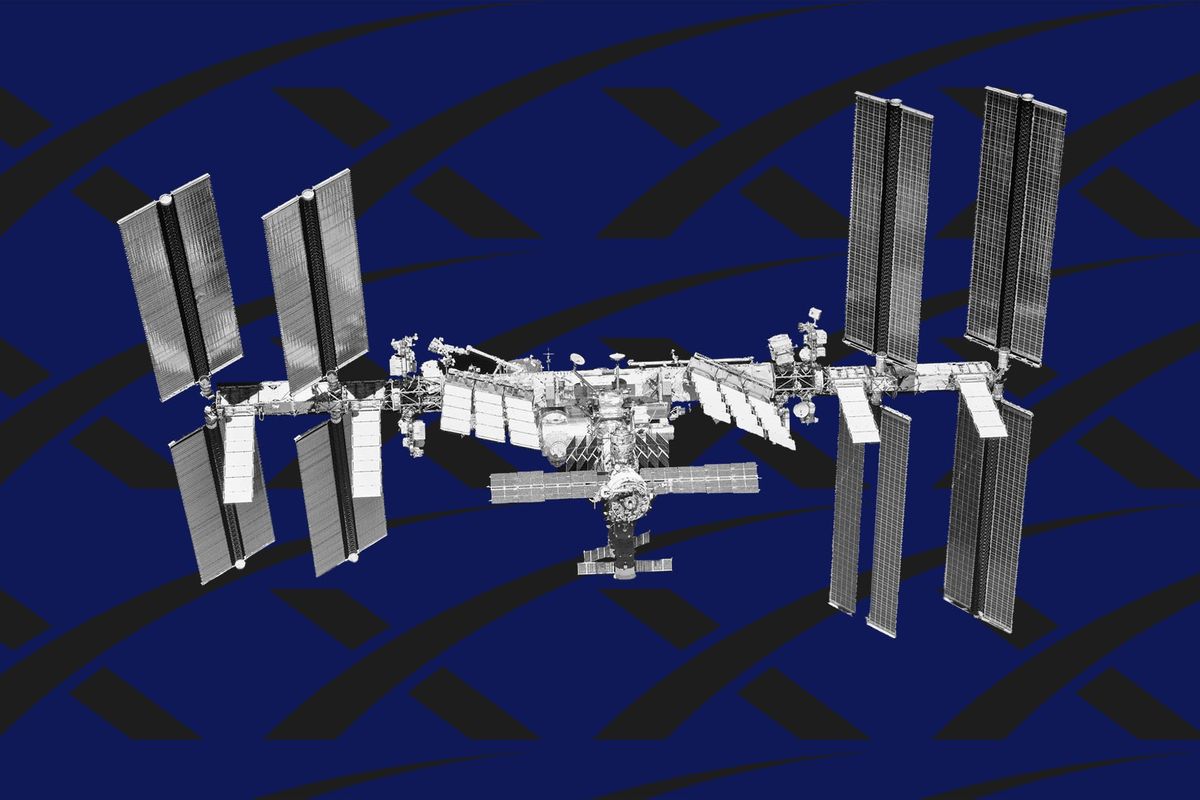FCC Denies Starlink Low-Orbit Bid for Lower Latency

The FCC has once again rejected a Starlink plan to deploy thousands of internet satellites in very low earth orbits (VLEO) ranging from 340 to 360 kilometers. In an order published last week, the FCC wrote: SpaceX may not deploy any satellites designed for operational altitudes below the International Space Station," whose orbit can range as low as 370 kilometers.
Starlink currently has nearly 6000 satellites orbiting at around 550 kilometers that provide internet access to over 2.5 million customers around the world. But its service is currently slower than most terrestrial fiber networks, with average latencies (the time for data to travel between origin and destination) over 30 milliseconds at best, and double that at peak times.
If you fill that region with tens of thousands of satellites, it would put an even bigger squeeze on them and really compromise your ability to service the space station." -Hugh Lewis, University of Southampton, U.K.
The biggest single goal for Starlink from a technical standpoint is to get the mean latency below 20 milliseconds," said Elon Musk at a SpaceX event in January. For the quality of internet experience, this is actually a really big deal. If you play video games like I sometimes do, this is also important, otherwise you lose."
The easiest way to reduce latency is to simply shorten the distance the data have to travel. So in a February letter, SpaceX pleaded with the FCC to allow its VLEO constellation: Operating at these lower altitudes will enable SpaceX to provide higher-quality, lower-latency satellite service for consumers, keeping pace with growing demand for real-time applications." These now include the military use of Starlink for communications in warzones such as Ukraine.
Starlink also argued that its VLEO satellites would have collision probabilities ten times lower than those in higher orbits, and be easier to deorbit at the end of their functional lives.
But the FCC was having none of it. The agency had already deferred VLEO operations when it licensed Starlink operations in December 2022, and used very similar languages in its order last week: SpaceX must communicate and collaborate with NASA to ensure that deployment and operation of its satellites does not unduly constrain deployment and operation of NASA assets and missions, supports safety of both SpaceX and NASA assets and missions, and preserves long-term sustainable space-based communications services."
Neither the FCC nor SpaceX replied to requests for comment, but the agency's reasoning is probably quite simple, according to Hugh Lewis, professor of astronautics at the University of Southampton in the U.K. We don't understand enough about what the risks actually are, especially because the number of satellites that SpaceX is proposing is greater than the number they've already launched," he says.
I think the FCC might be overreacting. We will know where all the satellites are, we can watch them and avoid them. It is the stuff we can't see that's the problem." -John Crassidis, University at Buffalo
Although it might seem that having satellites orbiting below the International Space Station (ISS) would be safer than orbiting above, the fast-moving, SUV-sized Starlink craft might restrict when astronauts could reach the ISS-or leave in an emergency. We are already seeing interruptions in launch windows thanks to Starlink," says Lewis. If you fill that region with tens of thousands of satellites, it would put an even bigger squeeze on them and really compromise your ability to service the space station."
In February 2022, NASA recommended that SpaceX prepare an analysis of launch window availability for the space station and interplanetary missions to ensure that Starlink would not significantly reduce access to space. No such analysis has been made public.
John Crassidis, professor of mechanical and aerospace engineering the University at Buffalo, isn't convinced the VLEO satellites would be that disruptive. I think the FCC might be overreacting. We will know where all the satellites are, we can watch them and avoid them," he says. It is the stuff we can't see that's the problem."
While VLEO is almost empty compared to higher orbits, satellites there still risk collisions from satellites transiting up to their operational altitudes-and particularly from objects making uncontrolled descents to Earth. There's a persistent stream of things that are coming down, old cubesats and debris," says Lewis. It's like a constant rain coming down."
New guidelines that are meant to leave fewer dead satellites in space for decades could also mean more transits through lower orbits, according to a paper Lewis wrote last year. He thinks that impacts in VLEO could easily eject high speed fragments up to higher orbits: So even though you're below the ISS, the ISS would still be within range of a debris cloud for a collision at 350 kilometers."
Crassidis disagrees. You'd have to have a very violent collision to make that happen," he says. That's something I'm not worried about."
Aside from safety considerations, other internet satellite operators also seem skeptical of SpaceX's VLEO plans. Amazon asked the FCC for more opportunity to comment, while the Betzdorf, Luxembourg-based satellite telecom company SES sent a letter citing concerns about VLEO Starlinks interfering with its own satellites.
Although SpaceX will have to keep deploying its satellites well above 500 kilometers, the battle for a low-latency VLEO constellation isn't over. SpaceX also demonstrated a direct-to-cellular service in January with Starlink satellites at 360 kilometers, that it will likely want to operate commercially at similar altitudes rather than hundreds of kilometers higher. The FCC only deferred its decision on the low-flying satellites, along with 22,488 other satellites from SpaceX's original application, leaving the door open for future changes.
But for now at least, the astronauts of the ISS have won, and Musk and other online gamers will need to just keep on losing.
UPDATE 14 March 2023: The story was updated to include reference to a January demonstration of direct-to-cell service.